

KATHMANDU: As the month of Chait arrives, the streets of Kathmandu are alive with protests. From royalists to political parties, teachers, doctors, and various groups, demonstrations have been intensifying, making this month feel like one of unrest and calls for change. What began as sporadic protests have now evolved into daily events, with rallies, sit-ins, and protests held across the capital. This period has become a battleground for multiple factions, all vying for attention, change, or restoration of a political system they believe is essential to the country’s future.
The protests this month are diverse, with each group fighting for different causes, and many of them seem to have been amplified by a combination of historical grievances, political shifts, and a general sense of discontent. On one hand, you have the royalists, whose slogans call for a return to the monarchy. On the other, the ruling party, the Communist Party of Nepal (Unified Marxist-Leninist), or UML, has been organizing rallies to assert its dominance. The range of demands is as varied as the groups themselves, from the restoration of the monarchy to more basic demands like better wages and the implementation of previous agreements.
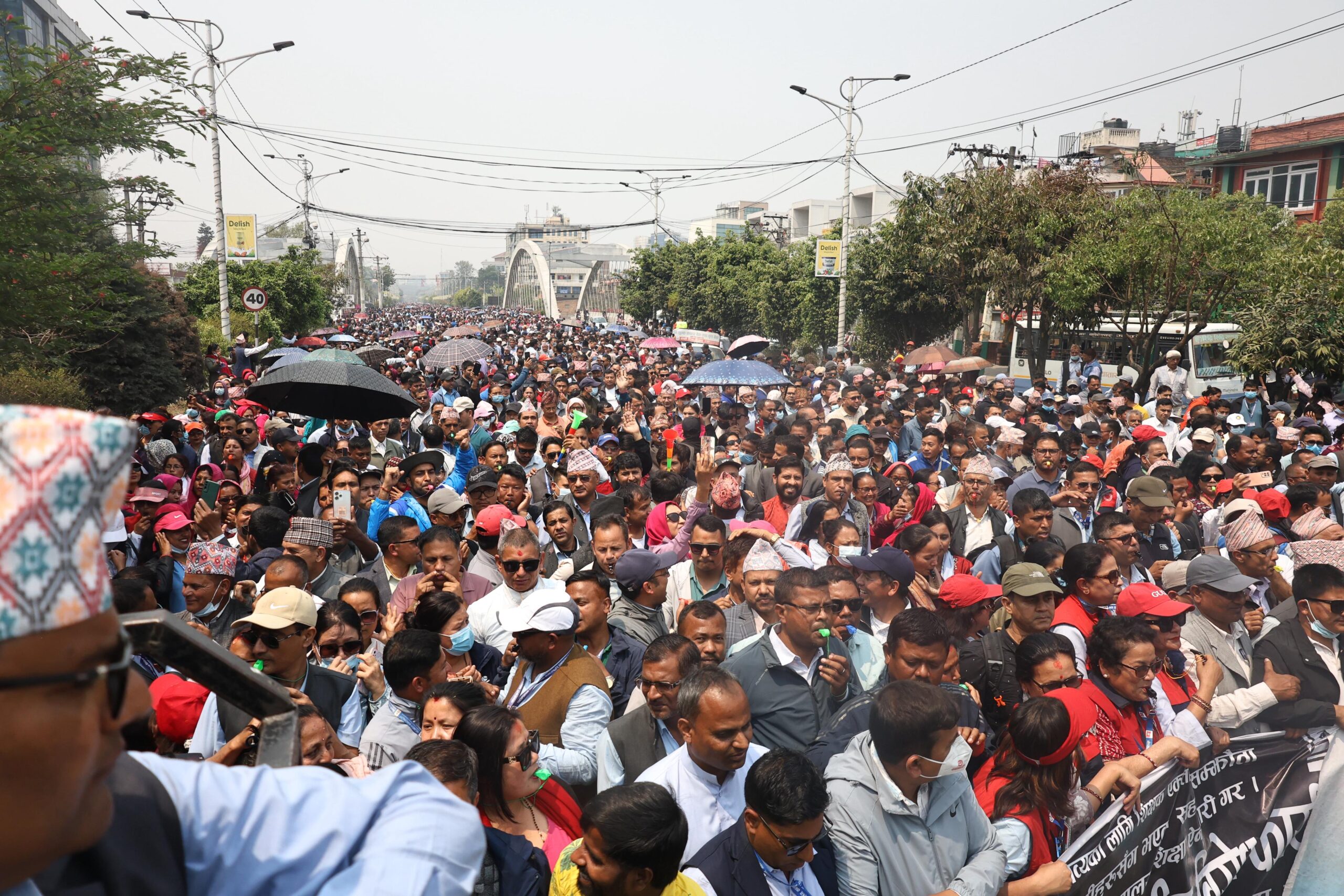
On a single Sunday, April 6th, the Maitighar Mandala area witnessed four separate protests, with various groups voicing their concerns. Teachers from all across Nepal have been gathering in Kathmandu, demanding that the government fulfill agreements made in previous years. These teachers, numbering in the thousands, have been holding demonstrations since March 20th, calling for the implementation of previously signed accords. Despite repeated calls from the government to sit for talks, the Teachers’ Federation has refused to come to the table, steadfast in its position. Prime Minister KP Sharma Oli, in his most recent statement, has expressed the government’s openness to discussing the teachers’ demands, but the protests show no signs of abating.
In the same Maitighar Mandala area, doctors also took to the streets, protesting what they call exploitation. Despite the cabinet approving a monthly salary of Rs. 48,000 for them, many doctors say they are only receiving Rs. 19,000. Their demands for fair compensation are backed by a deep frustration over what they perceive as unfair labor practices.
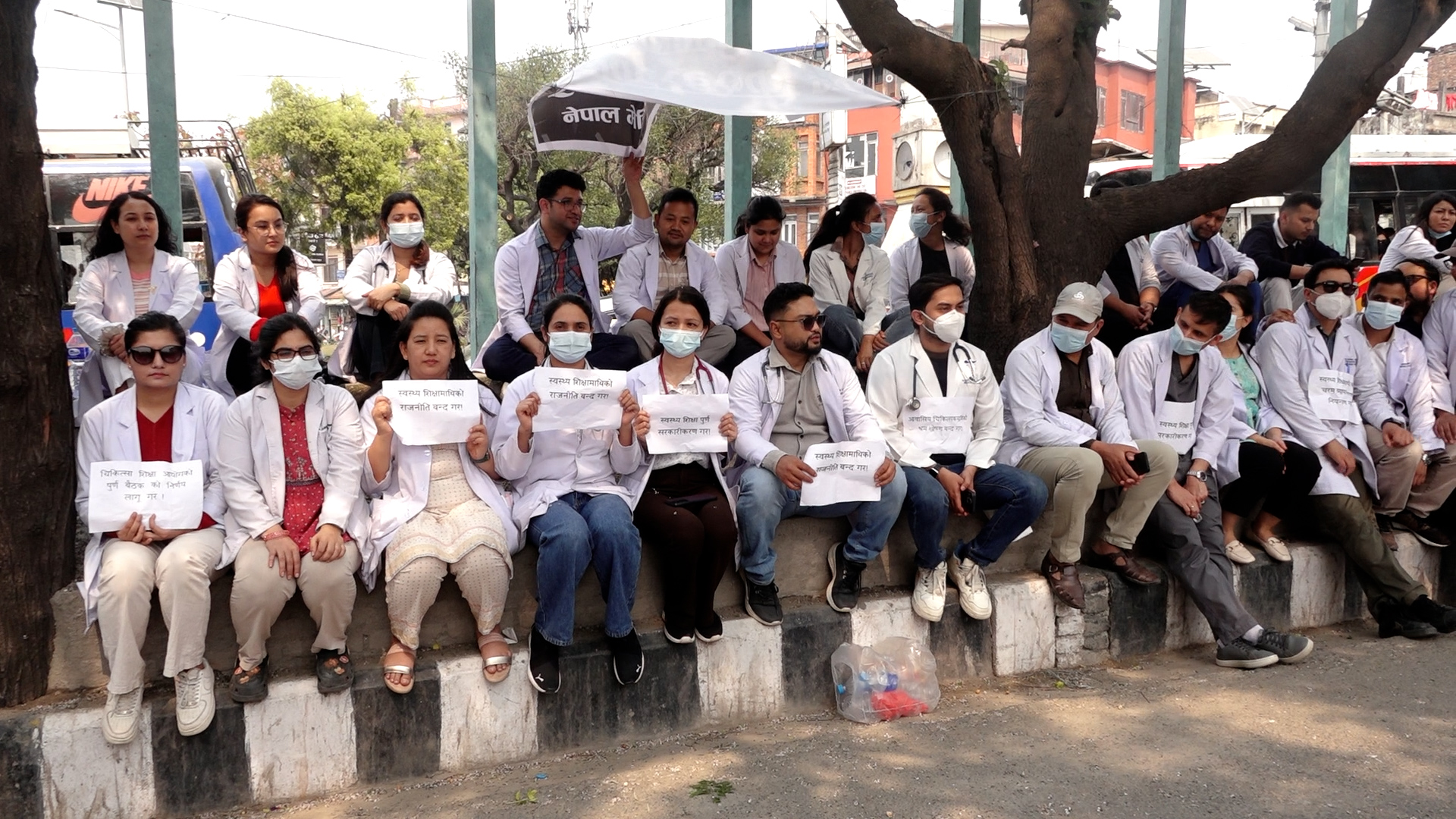
Sunday’s protests also saw supporters of Kulman Ghising, the former executive director of the Electricity Authority, taking to the streets. Ghising was removed from his position, and many of supporters view the decision as a political maneuver. Demonstrators called for his reinstatement, with some even going as far as to demand that Ghising be appointed as the executive president of Nepal. While the matter is now in the courts, the protests continue, with groups like Janata Ko Khabardar Samaj Nepal demanding action. The Supreme Court has yet to issue an interim order on Ghising’s case, but it has instructed the matter to be heard on priority.
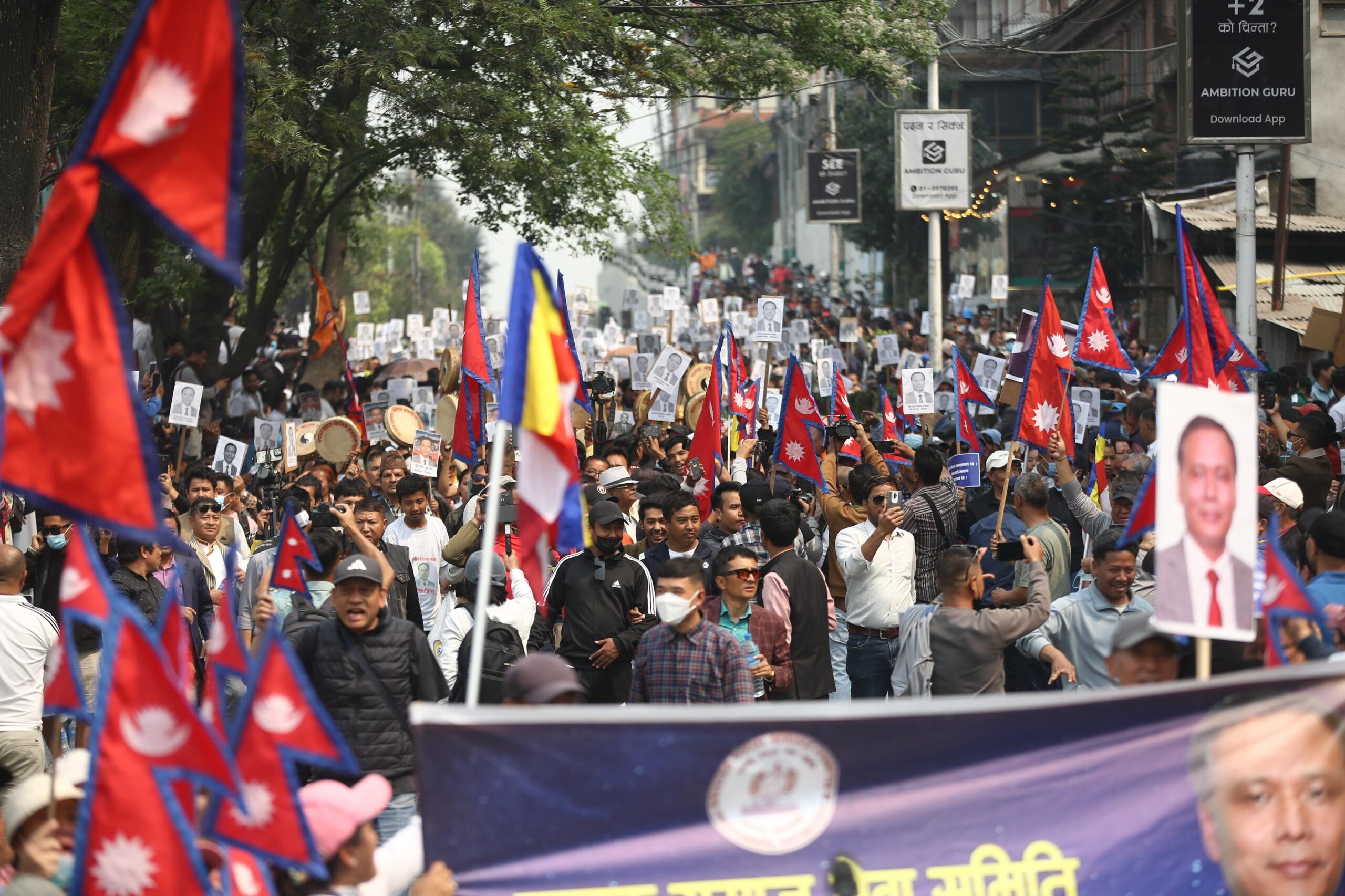
In addition to these, other political parties have also been active. The Janata Party, led by Prabhu Sah, organized a rally and meeting in Bhirkutimandap, marking the anniversary of the establishment of the republic. This event comes on the heels of a heightened political atmosphere, with the royalists and other factions continuing to stir the political pot.
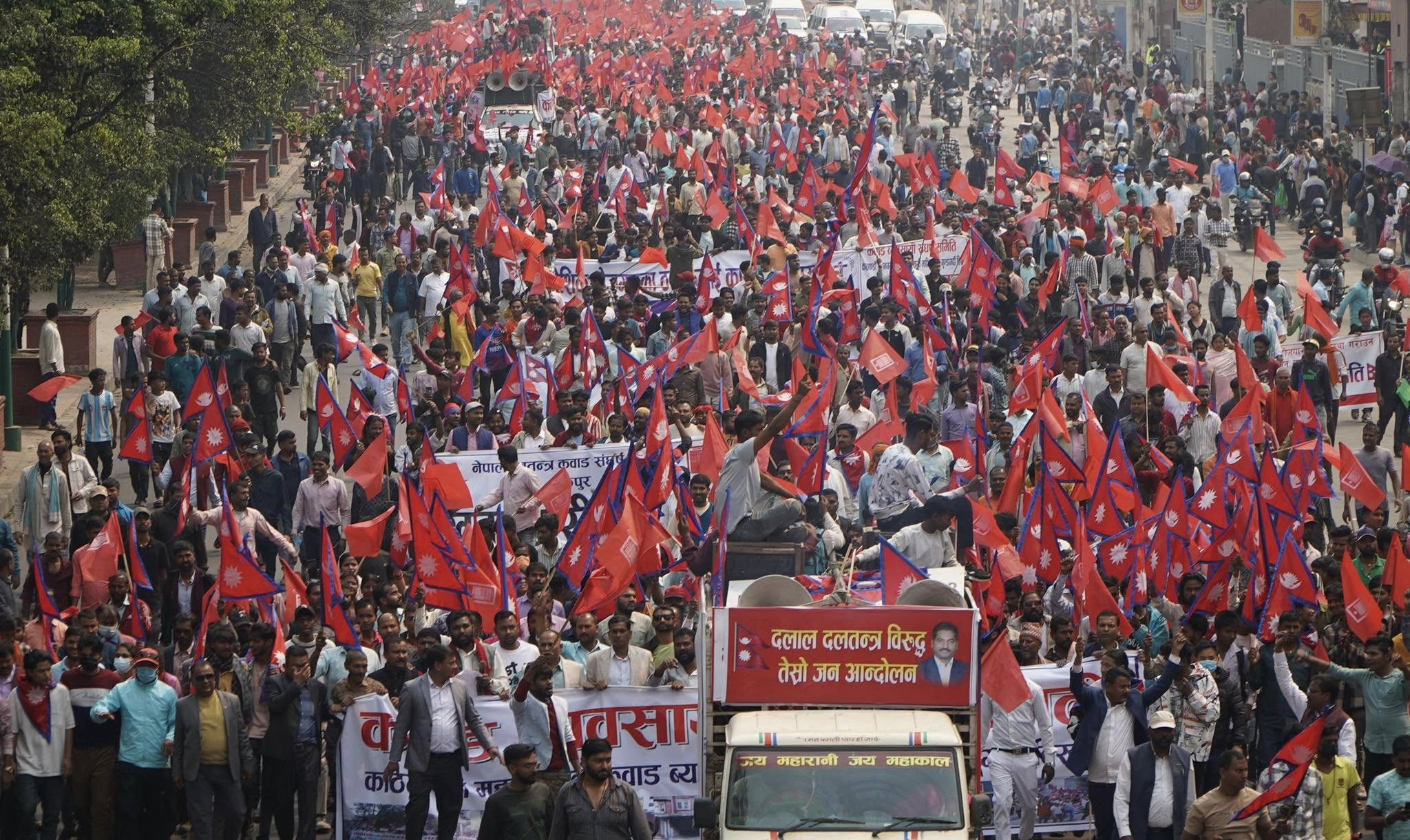
One of the most significant incidents occurred on March 28th, when royalists staged a protest at Tikune, Kathmandu, which turned violent. The demonstration spiraled out of control, resulting in two fatalities and over 60 injuries. The protesters caused widespread damage, with reports of vandalism and arson, including significant damage to public and private properties. This has sparked even more protests, with the Rastriya Prajatantra Party (RPP) voicing their discontent over the arrests of their leaders, including senior vice president Ravindra Mishra and general secretary Dr. Dhawalshamsher Rana. They claim that the arrests were politically motivated, and the party has continued to stage daily protests across the country.
In response to the royalist actions, the Socialist Front, led by the CPN Maoist Centre, also staged a demonstration on March 28th. They organized a gathering at Bhirkutimandap to oppose not just the royalists but the government as well. This only further intensified the political climate, and the ruling party, UML, decided to take proactive measures, organizing awareness rallies throughout the country. They, too, have grown concerned over the increasing activities of the royalists, and their own supporters took to the streets in response, organizing a motorcycle rally in Kathmandu.
Meanwhile, the main opposition party, CPN Maoist Centre, has focused its efforts on the Terai-Madhesh region. Starting in Jhapa, their protests have expanded to Bardiya, where they are calling attention to the government’s alleged shortcomings, especially along the Postal Highway. The Maoists’ campaign is partly in response to what they see as neglect by the central government.
Another party, the National Independent Party (Rastriya Swatantra Party), led by Ravi Lamichhane, has also taken part in the ongoing protests. Lamichhane, who is currently in custody due to a cooperative scandal, led a protest in Chitwan on March 20th, where his party sharply criticized the government. The party’s involvement underscores the broader dissatisfaction with the political establishment and highlights the discontent that has spread across the political spectrum.
The CPN Unified Socialist, another opposition party, has announced its intention to join the protests as well. Following the royalist protest at Tikune, where their central office was vandalized and set on fire, the party decided to hold nationwide protests in solidarity with their leaders and to condemn the violence against their headquarters.

The Janamorcha Party, which has been vocally opposed to federalism, has also started its own protest campaign. On March 20th, they launched a week-long campaign in Kathmandu. Their leader, Chitra Bahadur KC, emphasized that the campaign was in defense of the republic and national unity, sending a clear message that they will not back down from their position against federalism.
The events of March 28th at Tikune have clearly shaken the political landscape of Nepal. The violent nature of the protests and the deaths that occurred have only heightened the sense of instability. As a result, many parties are now ramping up their awareness campaigns and protests, fearing that these actions may signal a potential regression toward autocracy.
In this volatile climate, Kathmandu has become a city of constant protests, with citizens voicing their demands for a range of issues—from the restoration of the monarchy to calls for better wages and the protection of political freedoms. The streets have become a platform for the people to express their frustrations, and the government, despite making efforts to address some concerns, finds itself increasingly overwhelmed by the growing unrest.
As the month of Chait progresses, it is clear that the political situation in Nepal remains precarious. Whether these protests will lead to meaningful change or escalate into further instability remains to be seen, but for now, Kathmandu is a city where voices are rising, demanding attention from the powers that be.
Where Will the Storm of Movement Come From?
As the nation’s political landscape continues to shift, there is a rising sense of frustration in the streets of Nepal. There is no clear opposition at the forefront of these protests, but the energy of the citizens is palpable. Various groups across the country have taken to the streets in a growing wave of demonstrations that have begun to shape the course of public unrest. From the educated youth to the disillusioned older generation, all appear united in their collective frustration with the state of the nation. Nepal, it seems, has reached a boiling point. But the question remains: Where will the storm of movement come from?
In recent years, the lack of meaningful opposition and the growing discontent of the public have left a vacuum on the streets. The citizens of Nepal have now, inadvertently, become the opposition. The leaders of the political parties no longer have the pulse of the people; rather, they appear detached from the problems plaguing the common man. Now, the citizens are left to raise their voices in what some may call an organic, grassroots movement. This is not just another political protest; this is a movement born out of frustration, out of a refusal to let the political elite continue their unchecked rule.
The Struggle for Change
Across the country, the frustrations are mounting. There has been little significant progress in the development of the nation. Corruption is rampant, and the country’s service delivery systems are in dire need of reform. Despite repeated promises by the government, there has been no real economic transformation, and the country is in the midst of a slowdown. The political class, mired in their petty power struggles, seems more interested in personal gain than in lifting the nation from the mire of stagnation.
Many people are voting with their feet. The economic prospects in Nepal are dimming, and an increasing number of citizens are migrating abroad in search of better opportunities. Meanwhile, the domestic education system is in a state of decline, with many young people finding it increasingly difficult to find jobs after completing their education. The very foundations of the country seem to be crumbling, and as experts point out, the longevity of Nepal’s democracy rests on its ability to address these issues effectively.
The Politics of ‘Bhagbanda’ and Its Consequences
At the heart of the country’s political paralysis lies the thriving politics of ‘bhagbanda’ (division of spoils). Political parties, no matter how divergent their ideologies, are scrambling to carve out their own share of the power pie. This has led to an environment of intense frustration among the public, who feel that they have been sidelined in favor of political elites. The people are not just dissatisfied; they are disillusioned with the current political process, which seems to be more about managing power than about improving the lives of the citizens.
Job opportunities are scarce, and the country’s economic growth is stagnant. As a result, many Nepalese citizens have sought better prospects abroad. The emigration rate is climbing, as young people head to the Gulf countries, South Korea, and other parts of the world, leaving behind a country that has failed to meet their aspirations. The growing wealth gap in the country is another alarming sign. Economic inequality continues to deepen as certain elites thrive, while the majority are left to struggle.
In the meantime, the road to progress is being further hindered by a lack of trust in the system. Many view the political process as corrupt, with each party more concerned about maintaining their grip on power than about serving the public. The situation is made worse by a complete absence of accountability, where both the government and opposition parties are embroiled in internal struggles that do not benefit the citizens.
A Call for Rebellion and Consciousness
Given this grim landscape, the question arises: how can change be brought about? The answer lies in the citizens themselves. The people must raise their voices and ignite the flames of rebellion in their hearts. This rebellion is not just against the political parties, but against the very system that has kept the citizens disenfranchised. It is a rebellion against the corruption that has seeped into every institution, every layer of governance. It is a rebellion against the chaos created by self-serving leaders, who have failed the nation time and again.
The citizens must awaken their consciousness—a consciousness that questions the status quo, a consciousness that criticizes the failures of those in power. This is not a call for mindless opposition; it is a call for intelligent, thoughtful, and constructive rebellion. The time has come to reject the notion that the people are subjects to be controlled by political parties and leaders. It is time to demand that the government serve the citizens and that the citizens, not the party, take center stage in shaping the future of Nepal.
The consciousness of rebellion is not one of mindless anger, but rather of clear and firm determination to break the chains of party rule. The people must rise above the corrupt practices that have shackled their potential for far too long. The movement that will come should be led by the enlightened class—the youth, the intellectuals, and those who have suffered under the current regime. Together, they can build a vision for a better Nepal, one that is not limited by the failures of the past.
The Role of the Government
At present, the government’s neglect of its citizens is palpable. Political parties view citizens as nothing more than pawns, mere voters to be bought with promises and handouts. The leaders have forgotten the true essence of leadership—they have forgotten that their role is to serve the people, not to control them. They have become comfortable in their power, living in palaces while the majority of the population struggles to make ends meet. They have forgotten that time has a way of awakening the people, and that the chains of oppression cannot hold forever.
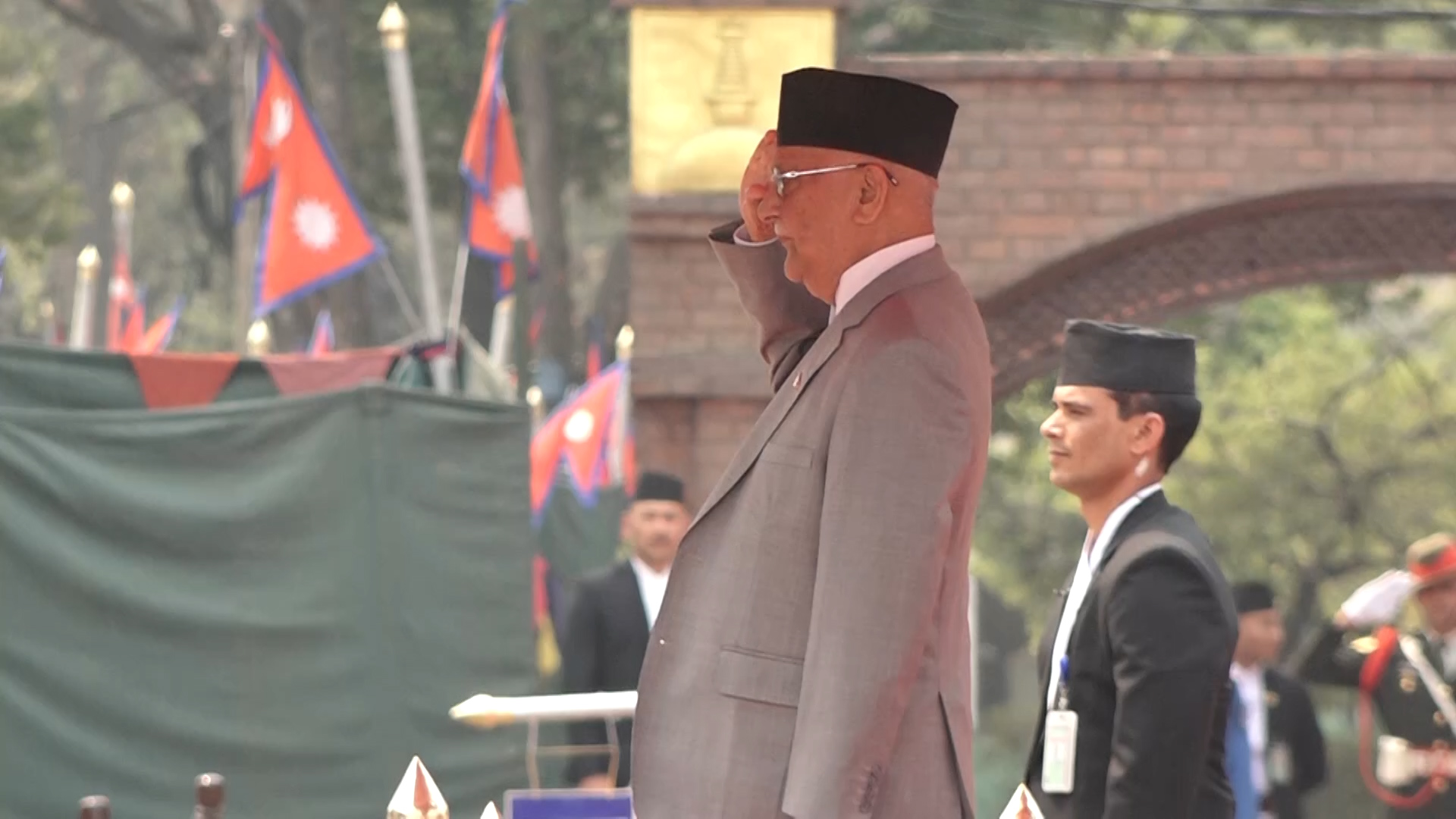
It is evident that the current crop of leaders is living in a state of denial. They believe that their power is unassailable, that they can control the populace indefinitely. They treat the people with disdain, assuming that they can be manipulated with words and promises. But this attitude is dangerous. It is the same arrogance that has led to the downfall of many regimes in history.
The question remains: who holds the power in Nepal? Is the citizen under the party, or is the party under the citizen? Is the state under the citizen, or is the citizen under the state? It is time to remind the political elite that the true power lies with the people. It is time to restore the supremacy of the citizen, to reject the arrogance of political parties, and to dismantle the system of power that has become so deeply entrenched in corruption and self-interest.
Corruption, Immorality, and the Erosion of Democracy
Nepal’s political system is in disarray. Corruption has become a way of life, with both public and private institutions plagued by bribery, embezzlement, and favoritism. The political parties that were supposed to be the guardians of the people’s welfare have become the architects of their downfall. Corruption has infiltrated every level of government, and it is now an accepted part of the political process. Leaders who should be in jail for their corrupt practices are instead treated as heroes, adorned with power and prestige.
This corruption has undermined the very fabric of democracy. The political parties, which were once the voice of the people, have become nothing more than vehicles for self-interest. They have become characterless, their ideologies hollow, and their promises empty. They have turned democracy into a corrupt regime that serves the interests of a few at the expense of the many.
The Crisis at Hand
Nepal is at a tipping point. The political collapse is palpable, and the country is trapped in the grip of economic stagnation and social unrest. The people have had enough. They are frustrated, angry, and ready to demand change. But the question is: will the political elites listen? Will they recognize that the time has come for a new direction? Or will they continue to cling to their power, even as the country crumbles around them?
The people have shown that they are not afraid to take to the streets, to raise their voices in protest. The Koshi Province identity movement is one example of the growing dissatisfaction with the status quo. The people of Pathibhara and Mukkumalung have raised their voices against the construction of the cable car, a symbol of the government’s disregard for the concerns of ordinary citizens. The movement may have started in the east, but it has spread to the capital, a sign that the frustration is widespread.
In the end, the question remains: when will the storm of movement come? The streets are waiting for it, the people are ready, and the time for change is now. Only through a movement, a movement driven by the will of the people, can Nepal break free from the chains of political corruption and misrule. The storm of movement is coming, and when it does, it will reshape the future of Nepal.
The Frustrations of a Nation: Nepal’s Struggles and the Road Ahead
All it takes to comprehend the frustrations of the citizens is to walk through Tribhuvan International Airport (TIA), where thousands of men and women, their faces etched with uncertainty, carry the weight of a nation’s unmet promises. These are people who have lost faith in the future of their country, individuals seeking better opportunities abroad, driven by the harsh realities that continue to plague Nepal.
For years, Nepal has found itself stuck in the quicksand of stagnation, with little to show for its long-standing struggles. The country is mired in a web of economic hardship, political instability, human rights violations, gender inequality, a continuing migration crisis, and the constant fear of natural disasters. A pervasive culture of corruption has deepened the malaise, inhibiting development at every level.
Corruption has become the lifeblood of Nepal’s political and business systems. It thrives in all corners—government offices, business dealings, and societal structures. The innocent citizens, whose hopes are dashed at every turn, see that political connections and bribes are necessary for everything from securing a job to accessing public services. Despite numerous scandals exposing the misconduct of those in power, political protectionism ensures that no real repercussions are ever faced. This culture of impunity feeds the public’s growing anger and frustration.
The economic state of Nepal is grim. According to the Multidimensional Poverty Index 2024, 20.1 percent of the population is considered multidimensionally poor, deprived of basic needs such as health, education, and a decent standard of living. While political leaders squabble over power, the people have no choice but to look beyond the borders for work. Currently, over 5.6 million Nepalis hold work permits abroad, contributing roughly 25 percent of the nation’s GDP through remittances. However, this has come at a high cost—many migrant workers, especially those in the Gulf countries, endure appalling conditions. Low wages, physical and mental abuse, and exploitation are all too common, with little protection for the people who sustain Nepal’s economy. The tragic loss of thousands of migrant workers’ lives has done little to prompt significant reforms in labor rights.
The political landscape of Nepal has been characterized by chronic instability and inefficiency. With 14 different prime ministers in the past 16 years, the country’s political progress has been stalled at every turn. Political parties seem more interested in power struggles than in serving the people, and as a result, critical issues like unemployment, infrastructure development, and social welfare continue to fester. Public disillusionment with Nepal’s democratic institutions is palpable, and it is only deepening as the country’s leaders remain entrenched in their petty rivalries.
The rural areas bear the brunt of Nepal’s failure to address basic infrastructure needs. Pregnant women suffer life-threatening complications simply because they must travel hours to fetch water, a basic necessity. Access to clean drinking water remains a luxury for many, and with only 27 percent of the population having access to basic sanitation, waterborne diseases are a constant threat.
Air pollution in Kathmandu has reached disastrous levels, exacerbated by vehicle emissions, construction activity, and the burning of agricultural waste. The consequences are dire—approximately 50,000 people die each year in Nepal due to chronic lung diseases, heart disease, and respiratory infections linked to poor air quality. Studies suggest that life expectancy is decreasing by nearly five years due to the overwhelming pollution. Kathmandu’s air is now ranked among the worst in the world, and people wear masks not as a precaution but as a means of survival.
Flooding, too, has become a recurrent nightmare for the country. In September 2024, a devastating flood and series of landslides claimed the lives of over 246 people, displacing more than 10,000 households. Roads, bridges, and schools were destroyed, and rivers like the Bagmati and Saptakoshi overflowed, resulting in one of the most catastrophic natural disasters in recent memory. Poor urban planning and deforestation have only intensified the effects of these calamities, leaving informal settlements particularly vulnerable.
This is only a glimpse of the many frustrations that plague Nepalese citizens. When a country faces such overwhelming challenges year after year, it is no surprise that the people’s hopes for change begin to wither. And so, as we walk through Tribhuvan International Airport, the faces of the men and women seeking a future elsewhere tell a powerful story—one of disillusionment, frustration, and the yearning for a better life. A better life that, for many, remains just out of reach in the country they call home.